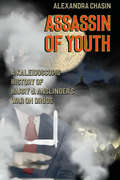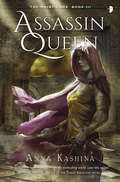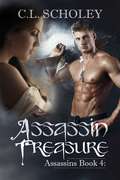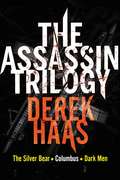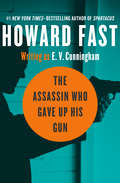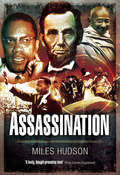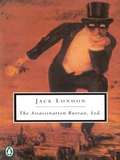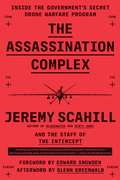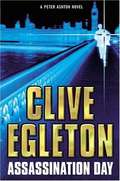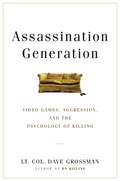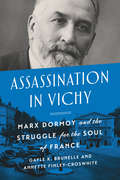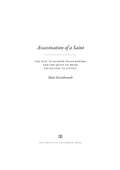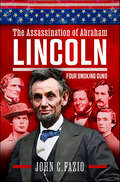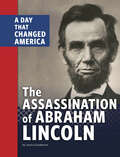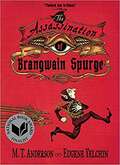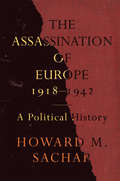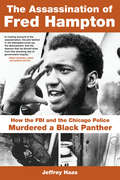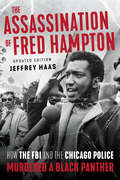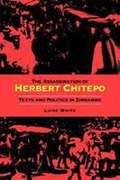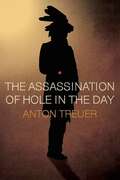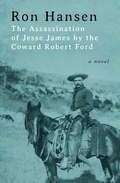- Table View
- List View
Assassin of Youth: A Kaleidoscopic History of Harry J. Anslinger’s War on Drugs
by Alexandra ChasinCommissioner of the Federal Bureau of Narcotics from its establishment in 1930 until his retirement in 1962, Harry J. Anslinger is the United States' little known first drug czar. Anslinger was a profligate propagandist with a flair for demonizing racial and immigrant groups and perhaps best known for his zealous pursuit of harsh drug penalties and his particular animus for marijuana users. But what made Anslinger who he was, and what cultural trends did he amplify and institutionalize? Having just passed the hundredth anniversary of the Harrison Act--which consolidated prohibitionist drug policy and led to the carceral state we have today--and even as public doubts about the drug war continue to grow, now is the perfect time to evaluate Anslinger's social, cultural, and political legacy. In Assassin of Youth, Alexandra Chasin gives us a lyrical, digressive, funny, and ultimately riveting quasi-biography of Anslinger. Her treatment of the man, his times, and the world that arose around and through him is part cultural history, part kaleidoscopic meditation. Each of the short chapters is anchored in a historical document--the court decision in Webb v. US (1925), a 1935 map of East Harlem, FBN training materials from the 1950s, a personal letter from the Treasury Department in 1985--each of which opens onto Anslinger and his context. From the Pharmacopeia of 1820 to death of Sandra Bland in 2015, from the Pennsylvania Railroad to the last passenger pigeon, and with forays into gangster lives, CIA operatives, and popular detective stories, Chasin covers impressive ground. Assassin of Youth is as riotous and loose a history of drug laws as can be imagined--and yet it culminates in an arresting and precise revision of the emergence of drug prohibition. Today, even as marijuana is slowly being legalized, we still have not fully reckoned with the racist and xenophobic foundations of our cultural appetite for the severe punishment of drug offenders. In Assassin of Youth, Chasin shows us the deep, twisted roots of both our love and our hatred for drug prohibition.
Assassin Queen
by Anna KashinaDefeated by the Majat forces, Nimos and the other Kaddim Brothers retreat to their secret fortress in the southern mountains. Nimos knows that the Majat's victory is only temporary: during the flight, he managed to place a mark on Kara, one of the top-ranked Diamond Majat. His mind magic would now allow him to use this mark to confer her fighting skill to the Kaddim warriors and turn her loyalties to their side. The new Majat Guildmaster, Mai, is planning a march against the Kaddim. His key ally, Prince Kyth Dorn, is instrumental in these plans: Kyth's magic gift can protect the Majat against the Kaddim mind control powers. But Mai and Kyth are having trouble getting over their rivalry for Kara's affections - even after they realize that this rivalry is the least of their worries, at least for the moment. Something about Kara is not right...
Assassin Treasure
by C. L. ScholeyThe cold, lifeless stare of her prone boss, Tyler Darren, makes Candy's breath stop. The powerful assassin, gun in hand, has her heart pounding in fear as she hides under a desk. Run, her mind screams, while her body is a block of ice. Desperation forces her into action and she flees for her life. But there is nowhere to hide. The arms of an assassin is a dangerous place to be. Dirk is a man who kills the evil, not the innocent. The frightened woman whose existence is in his hands makes his blood boil with want. When she's stolen from him, Dirk sets out to teach a killer no one steals an assassin's treasure.
The Assassin Trilogy
by Derek HaasAn e-original omnibus of three suspense novels by the Barry Award-nominated novelist and co-screenwriter of Wanted, 3:10 to Yuma and The Double.He calls himself Columbus. His real name never meant much to him anyway. He never knew his father, an earnest young congressman and rising star in the Democratic Party named Abe Mann, or his mother, a prostitute whose involvement with Mann would prove dangerous.All Columbus cares about is his next target. A hit man who quickly made a name for himself as one of the best in his profession, you can be sure he'll fulfill whatever contract's been given him. Even if those who put out the hit have other plans in mind.In THE COLUMBUS TRILOGY, the first three novels by Barry Award-nominated author Derek Haas, Columbus squares off against the shadow of his father, Czech crime lords, drug dealers, a prostitution ring, and more, in three acclaimed suspense novels by a rising master of the genre.
The Assassin Who Gave Up His Gun
by Howard FastA target&’s wife makes a cold-hearted assassin question his workThe hitman adjusts his rifle sight in an apartment across the street from his mark. For thirty minutes he peers through his scope, watching the man he is about to kill. He waits patiently, for assassinations demand focus. One bullet is all he needs. When the job is done, he disappears. This is an ordinary working day for Richard Breckner, a hired gun on the payroll of one of America&’s enemies. He kills for the money, holding no allegiance to his country and no scruples about murder. He will kill anyone, no matter whom, from an American reverend in Miami to his superior at the department. But then, on a job in Geneva, he kills a target who dies unafraid. Unnerved by the dead man&’s steely confidence, Breckner turns on his employers. If he wishes to survive, the world&’s finest assassin must remember how to care. This ebook features an illustrated biography of Howard Fast including rare photos from the author&’s estate.
Assassination
by Miles HudsonThe assassination of political, religious and military leaders, often dictators, is frequently seen as the short cut to solving a particular problem. The author takes issue with this argument. Examining a series of linked assassinations together with their causes and effects, he seeks to demonstrate that in many cases the killings have produced unforeseen and unintended consequences that all too often result in the opposite result to that desired. His case studies, arranged intriguingly in pairs, cover such diverse characters as Julius Caesar and Thomas Becket, Gandhi and Jesus Christ, Tsar Alexander II and Abraham Lincoln, Michael Collins and Field Marshal Sir Henry Wilson, and Martin Luther King and Malcolm X.This is an absorbing, controversial and informative study.
Assassination!: The Brick Chronicle of Attempts on the Lives of Twelve US Presidents
by Brendan Powell SmithCreator of the bestselling The Brick Bible: A New Spin on the Old Testament and The Brick Bible: The New Testament, author Brendan Powell Smith offers a new take on American history. For more than a decade, Smith has honed his masterful work using LEGO(R) to re-create scenes from the Bible. Now, he turns his attention to unforgettable US presidential assassinations, both fatal and failed. Rediscover some of the most profound attacks that have occurred throughout US history involving the notorious assassinations on Abraham Lincoln, William McKinley, and John F. Kennedy. But did you also know that Richard Paul Pavlick sought to assassinate President Kennedy in 1960, though at the last minute he suddenly changed his mind? Or, that an unknown assailant desperately tried to murder Lincoln just eight months before his fatal night at Ford's Theatre? In addition, Smith reveals failed murder attempts against such presidents as Gerald Ford, Richard Nixon, Bill Clinton, and most recently, the 2011 attempt against President Barack Obama.With over four hundred highly detailed illustrations, Smith captivates the authenticity of these assassinations (re-creating famous photographs and oral history) while simultaneously demonstrating a creative new medium. Whether a historian or a LEGO(R) enthusiast, readers of all ages will surely be enthralled with Brendan Powell Smith's latest brick creation!
Assassination at Bayou Sauvage (The Andy Broussard/Kit Franklyn Mysteries #8)
by D. J. DonaldsonChief medical examiner Andy Broussard is at a family picnic in Bayou Sauvage when his uncle Joe is killed in a murder-suicide. The deceased assailant’s motives are unknown, and the mystery sends Broussard digging into his family’s past. Meanwhile, criminal psychologist Kit Franklyn finds herself being deputized when an NOPD slowdown forces the brass to bolster the ranks. Assigned to track down a missing woman, Franklyn’s case leads her right into Broussard’s investigation. Now, the two will have to depend on each other like never before if they are going to uncover the dark family secrets that are about to threaten both of their lives.
The Assassination Bureau, Ltd.
by Jack LondonThe Assassination Bureau kills people for money, but it also has a social conscience. The leader of the group justifies each killing--until the day he accepts a contract to kill himself.
The Assassination Complex: Inside the Government's Secret Drone Warfare Program
by Jeremy Scahill The Staff of The InterceptMajor revelations about the US government's drone program--bestselling author Jeremy Scahill and his colleagues at the investigative website The Intercept expose stunning new details about America's secret assassination policy.When the US government discusses drone strikes publicly, it offers assurances that such operations are a more precise alternative to troops on the ground and are authorized only when an "imminent" threat is present and there is "near certainty" that the intended target will be killed. The implicit message on drone strikes from the Obama administration has been trust, but don't verify. The online magazine The Intercept exploded this secrecy when it obtained a cache of secret slides that provide a window into the inner workings of the US military's kill/capture operations in Afghanistan, Yemen, and Somalia. Whether through the use of drones, night raids, or new platforms yet to be employed, these documents show assassination to be central to US counterterrorism policy. The classified documents reveal that Washington's fourteen-year targeted killing campaign suffers from an overreliance on flawed signals intelligence, an apparently incalculable civilian toll, and an inability to extract potentially valuable intelligence from terror suspects. This campaign, carried out by two presidents through four presidential terms, has been deliberately obscured from the public and insulated from democratic debate. The Assassination Complex allows us to understand at last the circumstances under which the US government grants itself the right to sentence individuals to death without the established checks and balances of arrest, trial, and appeal. The book will include original contributions from Glenn Greenwald and Edward Snowden.
Assassination Day
by Clive EgletonWill LANDON thinks it will be a routine task to vet the memoirs of Ross Frazer, who was an ex-Intelligence officer, involved in political assassinations, But events take a deadly, unexpected turn.
The Assassination Game (Star Trek: Starfleet Academy)
by Alan GratzWhen a terrorist attack rocks Starfleet Academy, it’s clear someone has a very serious—and very deadly—secret agenda.The rules are simple: Draw a target. Track him down and “kill” him with a spork. Take your victim’s target for your own. Oh, and make sure the player with your name doesn’t get to you first. No safe zones. No time-outs. The game ends when only one player remains. James T. Kirk is playing for fun. Leonard “Bones” McCoy is playing to get closer to a girl. But when a series of terrorist attacks rock the usually placid Starfleet Academy campus, it becomes clear that somebody is playing the game for real. Is it one of the visiting Varkolak, on Earth to attend an intergalactic medical conference? Or could it be a member of a super-secret society at the Academy dedicated to taking care of threats to the Federation, no matter what rules they have to break to do it? Find out in The Assassination Game, the fourth installment in Spotlight’s exciting series for teens.
Assassination Generation: Video Games, Aggression, and the Psychology of Killing
by Dave Grossman Katie Miserany Kristine Paulsen<P>The author of the 400,000-copy bestseller On Killing reveals how violent video games have ushered in a new era of mass homicide--and what we must do about it. <P>Paducah, Kentucky, 1997: a 14-year-old boy shoots eight students in a prayer circle at his school. <P>Littleton, Colorado, 1999: two high school seniors kill a teacher, twelve other students, and then themselves. <P>Utoya, Norway, 2011: a political extremist shoots and kills sixty-nine participants in a youth summer camp. <P>Newtown, Connecticut, 2012: a troubled 20-year-old man kills 20 children and six adults at the elementary school he once attended. <P>What links these and other horrific acts of mass murder? A young person's obsession with video games that teach to kill. <P>Lt. Col. Dave Grossman, who in his perennial bestseller On Killing revealed that most of us are not "natural born killers" - and who has spent decades training soldiers, police, and others who keep us secure to overcome the intrinsic human resistance to harming others and to use firearms responsibly when necessary - turns a laser focus on the threat posed to our society by violent video games. <P>Drawing on crime statistics, cutting-edge social research, and scientific studies of the teenage brain, Col. Grossman shows how video games that depict antisocial, misanthropic, casually savage behavior can warp the mind - with potentially deadly results. His book will become the focus of a new national conversation about video games and the epidemic of mass murders that they have unleashed.
Assassination in Vichy: Marx Dormoy and the Struggle for the Soul of France
by Gayle Brunelle Stephanie Annette Finley-CroswhiteDuring the night of 25 July 1941, assassins planted a time bomb in the bed of the former French Interior Minister, Marx Dormoy. The explosion on the following morning launched a two-year investigation that traced Dormoy’s murder to the highest echelons of the Vichy regime. Dormoy, who had led a 1937 investigation into the “Cagoule,” a violent right-wing terrorist organization, was the victim of a captivating revenge plot. Based on the meticulous examination of thousands of documents, Assassination in Vichy tells the story of Dormoy’s murder and the investigation that followed. At the heart of this book lies a true crime that was sensational in its day. A microhistory that tells a larger and more significant story about the development of far-right political movements, domestic terrorism, and the importance of courage, Assassination in Vichy explores the impact of France’s deep political divisions, wartime choices, and post-war memory.
Assassination of a Saint: The Plot to Murder Óscar Romero and the Quest to Bring His Killers to Justice
by Matt EisenbrandtOn March 24, 1980, the assassination of El Salvador's Archbishop Óscar Romero rocked that nation and the world. Despite the efforts of many in El Salvador and beyond, those responsible for Romero's murder remained unpunished for their heinous crime. Assassination of a Saint is the thrilling story of an international team of lawyers, private investigators, and human-rights experts that fought to bring justice for the slain hero. Matt Eisenbrandt, a lawyer who was part of the investigative team, recounts in this gripping narrative how he and his colleagues interviewed eyewitnesses and former members of death squads while searching for evidence on those who financed them. As investigators worked toward the only court verdict ever reached for the murder of the martyred archbishop, they uncovered information with profound implications for El Salvador and the United States.
The Assassination of Abraham Lincoln: Four Smoking Guns
by John FazioCovering one of the most defining moment of America's history, The Assassination of Abraham Lincoln aims to lay the multitude of theories surrounding Lincoln’s assassination to rest. Immediately after the assassination of Abraham Lincoln, suspicion naturally fell on Confederate leaders as being responsible for the great crime. The belief in their complicity faded when the case against Jefferson Davis and other unindicted co-conspirators collapsed at the trial of John Wilkes Booth’s action team (Booth was dead) in May and June, 1865. The belief then hibernated for 123 years, during which period the prevailing wisdom was that Booth had in fact acted with the help of no one other than his team, with the possible exception of Dr. Samuel Mudd and Mary Surratt. In 1988, however, assassination historians James O. Hall, William A. Tidwell and David Gaddy thoroughly discredited the simple conspiracy theory in their seminal work Come Retribution, holding that the original suspicions were right after all. In 1995, Tidwell followed with a solo titled April ’65 in which he strengthened the case against Confederate leaders. The authors’ conclusions quickly gained acceptance by many experts in the field, including the author of this work, which is intended to remove any remaining doubt as to the validity of the theory. It does so by describing in detail four subplots in the overall plot to murder the President, subplots that demonstrate unequivocally that Booth was merely a pawn in the hands of far more powerful, influential and purposeful men than he, men whose backs were to the wall and who would therefore stop at nothing to avert the catastrophe that they had fought four long years to prevent and that was now upon them.
The Assassination of Abraham Lincoln: A Day That Changed America (Days That Changed America Ser.)
by Jessica GundersonOn April 14, 1865, only days after the Civil War had come to a close, a gunshot rang out in Ford’s Theatre and President Abraham Lincoln slumped forward in his seat. Hours later, the United States had lost its leader. Now readers can step back in time to learn about what led up to the assassination plot, how the fateful evening unfolded, and the ways in which one tragic day changed America forever.
The Assassination Of Brangwain Spurge
by Matthew Anderson Eugene YelchinUptight elfin historian Brangwain Spurge is on a mission: survive being catapulted across the mountains into goblin territory, deliver a priceless peace offering to their mysterious dark lord, and spy on the goblin kingdom — from which no elf has returned alive in more than a hundred years. Brangwain’s host, the goblin archivist Werfel, is delighted to show Brangwain around. They should be the best of friends, but a series of extraordinary double crosses, blunders, and cultural misunderstandings throws these two bumbling scholars into the middle of an international crisis that may spell death for them — and war for their nations. Witty mixed-media illustrations show Brangwain’s furtive missives back to the elf kingdom, while Werfel’s determinedly unbiased narrative tells an entirely different story. This National Book Award finalist and hilarious, biting social commentary is rife with thrilling action, visual humor, and a comic disparity that suggests the ultimate victor in a war is perhaps not who won, but who gets to write the history.
The Assassination of Europe, 1918-1942: A Political History
by Howard M. SacharIn this fascinating volume, renowned historian Howard M. Sachar relates the tragedy of twentieth-century Europe through an innovative, riveting account of the continent's political assassinations between 1918 and 1939 and beyond. By tracing the violent deaths of key public figures during an exceptionally fraught time period—the aftermath of World War I—Sachar lays bare a much larger history: the gradual moral and political demise of European civilization and its descent into World War II. In his famously arresting prose, Sachar traces the assassinations of Rosa Luxemburg, Kurt Eisner, Matthias Erzberger, and Walther Rathenau in Germany—a lethal chain reaction that contributed to the Weimar Republic's eventual collapse and Hitler's rise to power. Sachar's exploration of political fragility in Italy, Austria, the successor states of Eastern Europe, and France completes a mordant yet intriguing exposure of the Old World's lethal vulnerability. The final chapter, which chronicles the deaths of Stefan and Lotte Zweig, serves as a thought-provoking metaphor for the assassination of the Old World itself.
The Assassination of Fred Hampton: How the FBI and the Chicago Police Murdered a Black Panther
by Jeffrey HaasUncovering a cold-blooded execution at the hands of a conspiring police force, this engaging account relentlessly pursues the murderers of Black Panther Fred Hampton. Documenting the entire 14-year process of bringing the killers to justice, this chronicle also depicts the 18-month court trial in detail. Revealing Hampton himself in a new light, this examination presents him as a dynamic community leader whose dedication to his people and to the truth inspired the young lawyers of the People's Law Office, solidifying their lifelong commitment to fighting corruption. Contending with FBI stonewalling and unlimited government resources bent on hiding a darker plot, this reconstruction relates an inspiring narrative of upholding morality in one man's memory.
The Assassination of Fred Hampton: How the FBI and the Chicago Police Murdered a Black Panther
by Jeffrey HaasOn December 4, 1969, attorney Jeff Haas was in a police lockup in Chicago, interviewing Fred Hampton's fiancée. She described how the police pulled her from the room as Fred lay unconscious on their bed. She heard one officer say, "He's still alive." She then heard two shots. A second officer said, "He's good and dead now." She looked at Jeff and asked, "What can you do?" Fifty years later, Haas finds that there is still an urgent need for the revolutionary systemic changes Hampton was organizing to accomplish. With a new prologue discussing what has changed—and what has not—The Assassination of Fred Hampton remains Haas's personal account of how he and People's Law Office partner Flint Taylor pursued Hampton's assassins, ultimately prevailing over unlimited government resources and FBI conspiracy. Not only a story of justice delivered, the book puts Hampton in the spotlight as a dynamic community leader and an inspiration for those in the ongoing fight against injustice and police brutality.
The Assassination of Herbert Chitepo: Texts and Politics in Zimbabwe
by Luise WhiteThe Assassination of Herbert Chitepo, Luise White does not set out to resolve questions about who was accountable for this horrible murder. Instead, in a style that is as much murder mystery as it is history writing, she uncovers what is at stake in the various confessions and why Chitepo's assassination continues to incite conflict and controversy in Zimbabwe's national politics.
The Assassination Of Hole In The Day
by Anton TreuerOn June 27, 1868, Hole in the Day (Bagonegiizhig) the Younger left Crow Wing, Minnesota, for Washington, DC, to fight the planned removal of the Mississippi Ojibwe to a reservation at White Earth. Several miles from his home, the self-styled leader of all the Ojibwe was stopped by at least twelve Ojibwe men and fatally shot. Hole in the Day's death was national news, and rumors of its cause were many: personal jealousy, retribution for his claiming to be head chief of the Ojibwe, retaliation for the attacks he fomented in 1862, or retribution for his attempts to keep mixed-blood Ojibwe off the White Earth Reservation. Still later, investigators found evidence of a more disturbing plot involving some of his closest colleagues: the business elite at Crow Wing. While most historians concentrate on the Ojibwe relationship with whites to explain this story, Anton Treuer focuses on interactions with other tribes, the role of Ojibwe culture and tradition, and interviews with more than fifty elders to further explain the events leading up to the death of Hole in the Day. The Assassination of Hole in the Day is not only the biography of a powerful leader but an extraordinarily insightful analysis of a pivotal time in the history of the Ojibwe people.
The Assassination of Jacques Lemaigre Dubreuil: A Frenchman between France and North Africa (History and Society in the Islamic World)
by William A. Hoisington, Jr.This is a political biography of the French industrialist and political activist Jacques Lemaigre Dubreuil (1894-1955), president of the Taxpayers' Federation in the 1930s, entrepreneur in wartime France and Africa, organizer of the 'Group of Five' in Algiers which prepared for the Allied landings in North Africa (November 1942), 'inventor' of General Henri Giraud as a candidate for the leadership of liberated North and West Africa, negotiator of the Murphy-Giraud Agreements and the Anfa Memorandum with President Roosevelt (1942 and 1943), political writer on the postwar future of France in Morocco and the owner of the liberal newspaper Maroc-Presse. He was assassinated in Casablanca by French counter-terrorists in June 1955, a 'turning point' event which pushed the French government to grant independence to Morroco. Was he a rabble-rouser, a demagogue, a betrayer of French interests at home and overseas or a reformer, a patriot, a hero of the anti-German resistance, and a champion of Franco-Moroccan solidarity?
The Assassination of Jesse James by the Coward Robert Ford: A Novel (P. S. Ser.)
by Ron HansenA powerful novel of the infamous Western outlaw and his killer: &“The best blend of fiction and history I&’ve read in a long while&” (John Irving). By age thirty-four, Jesse James was already one of the most notorious and admired men in America. Bank robber, train bandit, gang leader, killer, and beloved son of Missouri— James&’s many epithets live on in newspapers and novels alike. As his celebrity was reaching its apex, James met Robert Ford, the brother of a James gang member—an awkward, antihero-worshipping twenty-year-old with stars in his eyes. The young man&’s fascination with the legend borders on jealous obsession: While Ford wants to ride alongside James as his most-trusted confidant, sharing his spotlight is not enough. As a bond forms between the two men, Ford realizes that the only way he&’ll ever be as powerful as his idol is to become him; he must kill James and take his mantle. In the striking novel that inspired the film of the same name starring Brad Pitt and Casey Affleck, bestselling author Ron Hansen retells a classic Wild West story that has long captured the nation&’s imagination, and breathes new life into the final days and ignoble death of an iconic American man.
